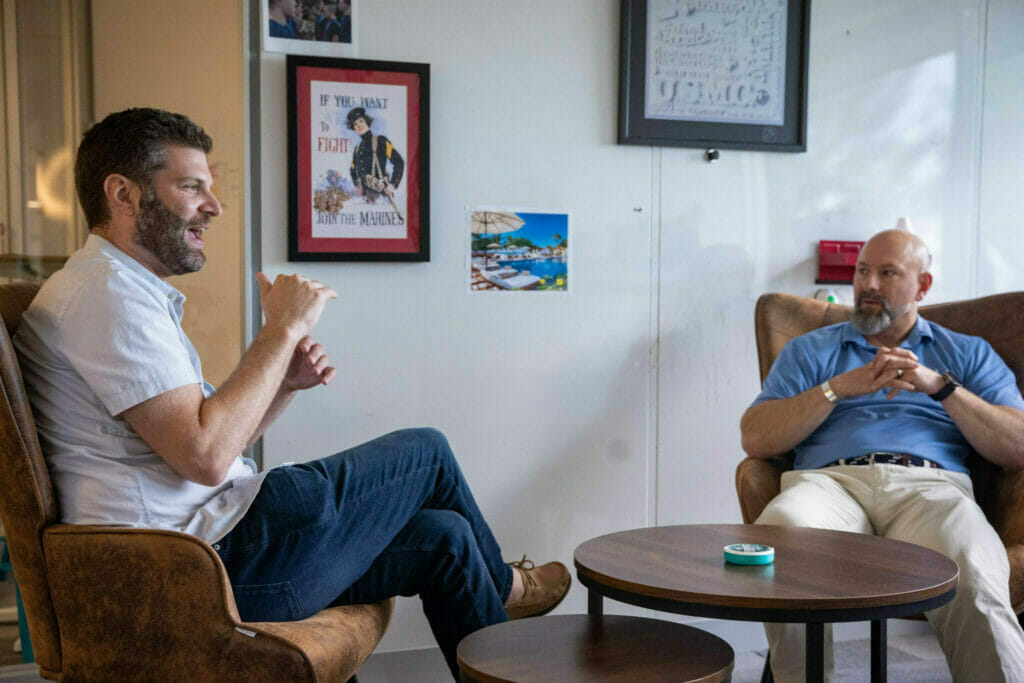Finding that perfect fit for a job can be tough. But keeping that hire engaged throughout the process—and making sure they want to join your company—can be even more of a challenge. That’s especially true within the current (highly competitive) hiring landscape.
I reached out to some of the hiring experts here at PI to see what they’ve seen go right and wrong when hiring. Four major themes emerged with all our experts:
- Set clear job expectations.
- Prepare your team beforehand.
- Assess candidates with empathy.
- Set them up for success (through onboarding).
The video below will cover these four themes—and what organizations can do to improve their hiring processes.
1. Set clear job expectations.
Like Victoria mentioned in the video, finding the right candidate doesn’t begin with that person, but rather the job you need to fill. Without knowing exactly what that candidate needs to accomplish, how will you know who is the right person for that job?
The biggest recommendation here is to perform what is known as a job analysis. A job analysis is a process used to collect information on what a job consists of. This can include things such as the actual actions performed, the skills required, the outcomes expected, and even the environment where this role will be performed. When performing a job analysis, you should aim to answer the following questions:
- Why does the job exist?
- What physical and mental activities does the worker undertake?
- When is the job to be performed?
- Where is the job to be performed?
- Under what conditions is it to be performed?
Once this data is gathered, the company can get a more holistic view on the type of person they need, based on what they expected will be accomplished.
As a hiring team, make sure you’re not letting all this legwork go to waste. Include this information in the job description, refer to it during the interview, talk about what exactly this candidate will be asked to do and what results you want to see.
This isn’t only beneficial for the hiring team, but also for the candidate. When they read or hear exactly what is expected, they’ll be able to self-select if this is the right job for them. Clarity is important for candidates, and for the sake of your own retention efforts.
2. Prepare your team beforehand.
These expectations don’t apply just to the candidates. You should also be sharing this data with the team this new candidate would be joining. Get the team involved in the hiring process in general. We’ve heard some crazy horror stories of team members being asked to interview a candidate without even knowing what they were being hired for—and you definitely don’t want this. Misalignment hurts your chances of wooing the candidate, sure, but it dings your company’s credibility, too.
Let’s take the interview as an example. You want to involve some future teammates in the interview process. But just adding them to a calendar invite with no context won’t be enough. This could potentially lead to each employee asking duplicate questions, or even worse, having them ask questions that might run into legal issues for your organization.
Instead, try scoping out the interviews so that each employee has a competency, or component of success, that they are measuring. For example, if you’re hiring a new customer success representative, you might want to break the interviews like this:
- One employee asks questions about technical expertise.
- One asks about problem-solving skills
- One asks about communication skills.
- And another evaluates the candidate’s potential cultural fit at the company.

3. Assess candidates with empathy.
This step might feel less actionable than the others, but it’s incredibly valuable to the employee experience. You’d be surprised how many people have a horror story when they think of past hiring experiences. From candidates being yelled at, to totally ignored, there are tons of ways to tarnish the experience and have potential top candidates opt for a different company.
To take a step above the competition, consider how to create a positive emotional reaction in people during this process. It’s not enough to simply say “Here’s why you should work for us.” That alone won’t prompt a positive emotional response in many candidates.
Instead, try asking “Why do you want to work here?”
This approach allows you to tailor the conversation to their needs, rather than using blanket statements about why you’re a great company. It also allows the candidate to better understand if this is the right fit for them, and helps avoid hires that leave shortly after.
4. Set them up for success (through onboarding).
Will put it best at the end of that video: “You just went through all this trouble to hire somebody who you think is great. So give them the chance to be great.”
The video covers a few strategies that we advocate for here at PI like providing small welcome gifts once an offer letter is signed or setting up meetings to create an easier experience within their first week(s).
However there are many more strategies you can implement like an onboarding buddy, creating short informational videos to welcome them to the team and catering onboarding to the behavioral needs of that new employee. To learn all about these strategies, you can check out our onboarding course.
But we get that all these elements might be tough to tackle all at once. Maybe you’re doing some of these, but not sure what part of your hiring process needs help. Take this short quiz and find out where—and how—your company can improve its hiring.








